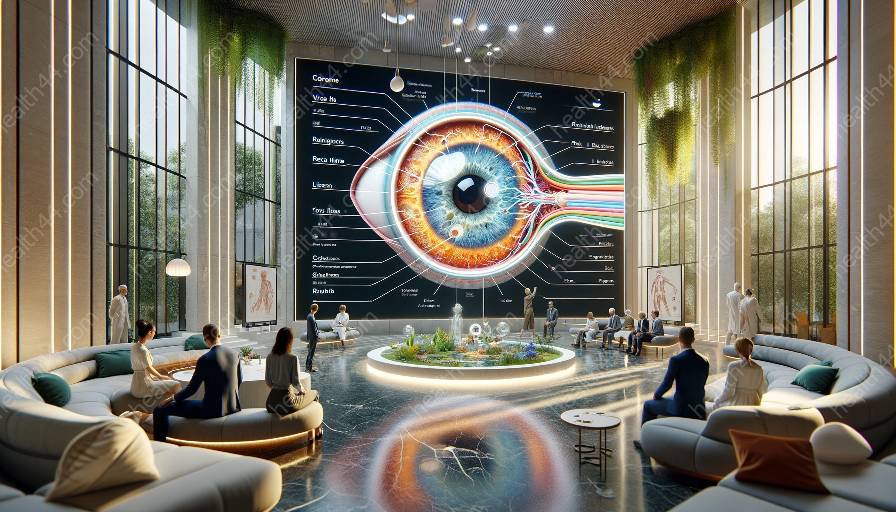The ciliary muscles are a crucial component of the eye anatomy, playing an essential role in the process of accommodation, which is the ability of the eye to adjust its focus from distant to near objects. Understanding the structure and function of these muscles is key to comprehending their significance in vision rehabilitation. This comprehensive topic cluster will delve into the intricate details of the ciliary muscles, their role in accommodation, and their relevance in the broader context of eye anatomy and vision rehabilitation.
Ciliary Muscles: Anatomy and Location
The ciliary muscles are a ring of smooth muscle fibers located within the ciliary body, which is a structure found in the eye. The ciliary body is situated behind the iris, the colored part of the eye, and is connected to the lens through a series of fibers known as zonules. The ciliary muscles are attached to the lens through these zonules, enabling them to exert influence on the shape of the lens.
The ciliary muscle is divided into three separate groups: the meridional fibers, the radial fibers, and the circular fibers. Each group plays a specific role in the process of accommodation, collectively contributing to the adjustment of the lens for near vision.
Function of the Ciliary Muscles in Accommodation
Accommodation is the ability of the eye to alter its optical power to maintain a clear image of objects at different distances. This ability is primarily facilitated by the ciliary muscles. When the eye needs to focus on a near object, the ciliary muscles contract, causing the zonules to loosen their tension on the lens. This reduction in tension allows the lens to become more rounded and increases its refractive power, enabling the eye to focus on the nearby object.
Conversely, for distant vision, the ciliary muscles relax, and the zonules pull on the lens, making it thinner and reducing its refractive power. This dynamic process occurs continuously as the eyes shift their focus between objects at varying distances, with the ciliary muscles playing a pivotal role in this complex mechanism.
Ciliary Muscles and Vision Rehabilitation
The understanding of the ciliary muscles and their role in accommodation has significant implications for vision rehabilitation. In cases where individuals experience difficulties in near vision, such as presbyopia, a condition commonly associated with aging, interventions aimed at enhancing the function of the ciliary muscles can play a crucial role in improving vision.
Various vision rehabilitation techniques focus on strengthening and training the ciliary muscles to improve their ability to accommodate for near vision. These techniques may involve exercises and visual therapies designed to promote the flexibility and agility of the ciliary muscles, thereby enhancing the overall process of accommodation.
Conclusion
The ciliary muscles are an integral part of the eye anatomy, contributing significantly to the process of accommodation and our ability to shift focus between near and distant objects. Understanding the structure and function of these muscles is essential for gaining insights into their role in vision rehabilitation and the management of various visual conditions. By comprehensively exploring the intricate details of the ciliary muscles, their anatomy, and their function in accommodation, we can appreciate their significance in maintaining optimal vision and explore avenues for vision rehabilitation and enhancement.





















